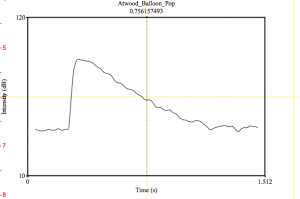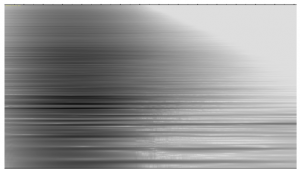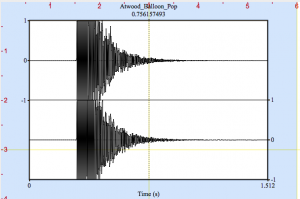Loading map...

Location: This recording was taken in the bathroom of one of the suites on the third floor of Atwood Dorm at Harvey Mudd College.
Description of the space: Atwood dorm is known for its gigantic bathrooms. For this recording stood in the shower, which is about 1.5 m wide and 1.5 meters long. There is a door leading into the bathroom hallway that has two sinks. Past the sinks there is a room with a door inside of which there is a toilet. Across from the toilet door is the entrance to the bathroom. The recording device was on a tripod at about chest level attached to one of the towel racks outside the shower. It was about 2 meters away from me.
Reverberation time:
Maximum intensity: 90.99 dB
30 dB drop: 61.4 dB @ 0.5 s
50 dB drop: 40.8 dB @ 1.0 s
Minimum Intensity: 40.8 dB @ 1.1s
Back to ambient: 44 dB @ 1.1 s
Acoustic Description: I expected the bathroom to have a longer reverb time but surprisingly this bathroom dampens the balloon pop sound rather quickly. One explanation for this could be that the bathroom is actually composed of porous concrete blocks (a material used in most Harvey Mudd buildings). Since this material has a lot of holes, it does not reflect sound well and thus reduces the reverb. Furthermore, I placed the recorder outside of the shower so the reverb may have been lost. The decay time was neither long nor short; it only took 1.1 s to reach its minimum intensity, which was also the region of ambient sound. The greatest source of background noise was the bathroom fan that was actually quite loud. This explains why the ambient sound level is so high. As can be seen on the spectrogram, even after the balloon pop, there are a lot of frequencies in the low to mid register.


